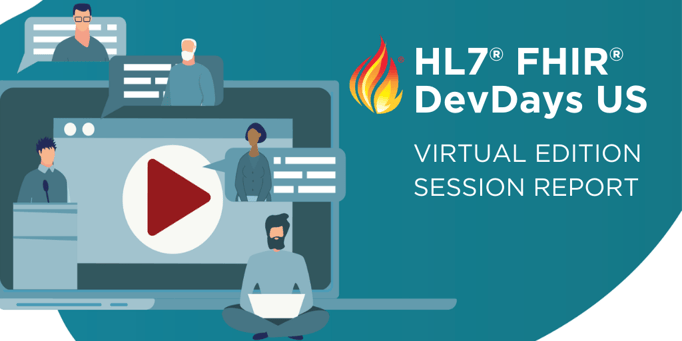
Report from Virtual FHIR DevDays 2020
Work on incorporating application programming interfaces using HL7’s Fast Healthcare Interoperability Resources (FHIR®) standard can help healthcare organizations better manage the COVID-19 crisis, but much more could be done.
A virtual panel at HL7’s FHIR DevDays indicated that API usage can help with the sharing of data, but more widespread use of this supportive programming could provide more benefits.
“If you look inside the typical hospital, there are more than 20 different clinical systems being used, but only one is the electronic health record getting the API love,” said Keith Boone, enterprise architect for Audacious Inquiry. “COVID data is showing up in bed management systems, command and control systems, ICU central monitoring and more.” Those systems are five years behind EHRs in enabling data exchange.
Abigail Watson, clinical informaticist and developer for Patientinsight, noted that FHIR-enabled APIs supporting better data exchange are only a small part of the answer. “It won’t solve the pandemic problem, even if we had 100 percent ubiquitous FHIR,” she said. But wider use of such information technology could help manage future pandemics, which may come in forms other than the respiratory attack of COVID-19.
The current pandemic shows the importance of data in public health, said Grahame Grieve, HL7 FHIR product director and the architect of FHIR. In healthcare, “we’re always ready to fight the last battle,” he said. “From this, we should learn that public health saves lives and saves economies. If you want a good economy, you need health. Health systems need resilience.”
The pandemic is prompting healthcare organizations to change the way they work, including more use of virtual and collaboration technology, such as Zoom and Microsoft Teams. Grieve stated, “people actually like them and they work well and they’re more efficient than the ways we’ve worked in the past. There’s a lot of noise about (achieving) integration between” EHRs and the increasingly popular collaborative technologies.
John Loonsk, MD, CMIO at Johns Hopkins noted that more needs to be done to enabling better information exchange. Public health initiatives are most effective when they’re able to get the information they need quickly, but at the height of a health emergency, that’s not always possible. He said, “Public health has been taking advantage of what data it could get, because it couldn’t get the data it wanted.”
Chat with the FHIR Community Today!


